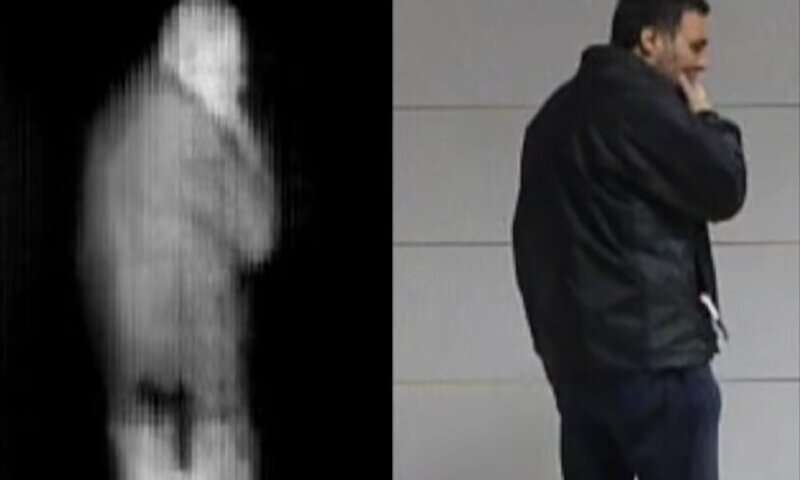February 10, 2020 report
Using long-wavelength terahertz radiation to produce video with a high frame rate

A team of researchers at Durham University has found a way to use long-wavelength terahertz radiation to produce video with a high frame rate. In their paper published in the journal Physical Review Letters, the group describes their technique and its possible uses.
A new type of noninvasive imaging may be on the way thanks to work by the team with this new effort—they have been looking into the possibility of using long-wavelength terahertz radiation. Like X-ray radiation, it can pass through clothes and other materials. But unlike X-ray radiation, it does not take electrons from atoms that comprise the material it passes through. Because of that, it is considered to be much safer. Such radiation has not been used in security and medical devices, however, because its energy is so low, it has been difficult to create high-resolution images using them. In this new effort, the researchers took a new approach to produce video using such radiation—instead of building a more sensitive sensor, the team made the waves more readable to conventional technology. The approach involved converting the terahertz photons into visible green photons, allowing for the use of conventional cameras that capture visible light to create video.
The researchers converted the terahertz radiation into green light by directing it into a cloud of excited cesium atoms. The cloud was created by firing multiple lasers at a sample of cesium vapor in a quartz cell—the frequency of the lasers was tuned to ensure a Rydberg state by the atoms in the cloud. Once the cloud was formed, the researchers fired a secondary terahertz laser through a moving object, which allowed a "shadow image" to strike the excited cesium cloud. Conventional high-speed cameras then captured the images as they emerged from the cloud.
The researchers used the technique to create videos of a falling drop of water and a small spinning wheel. They acknowledge that the resolution is not yet high enough for commercial applications, but suggest that they are already working on ways to sharpen the video.
More information: Lucy A. Downes et al. Full-Field Terahertz Imaging at Kilohertz Frame Rates Using Atomic Vapor, Physical Review X (2020). DOI: 10.1103/PhysRevX.10.011027
Journal information: Physical Review X , Physical Review Letters
© 2020 Science X Network




















